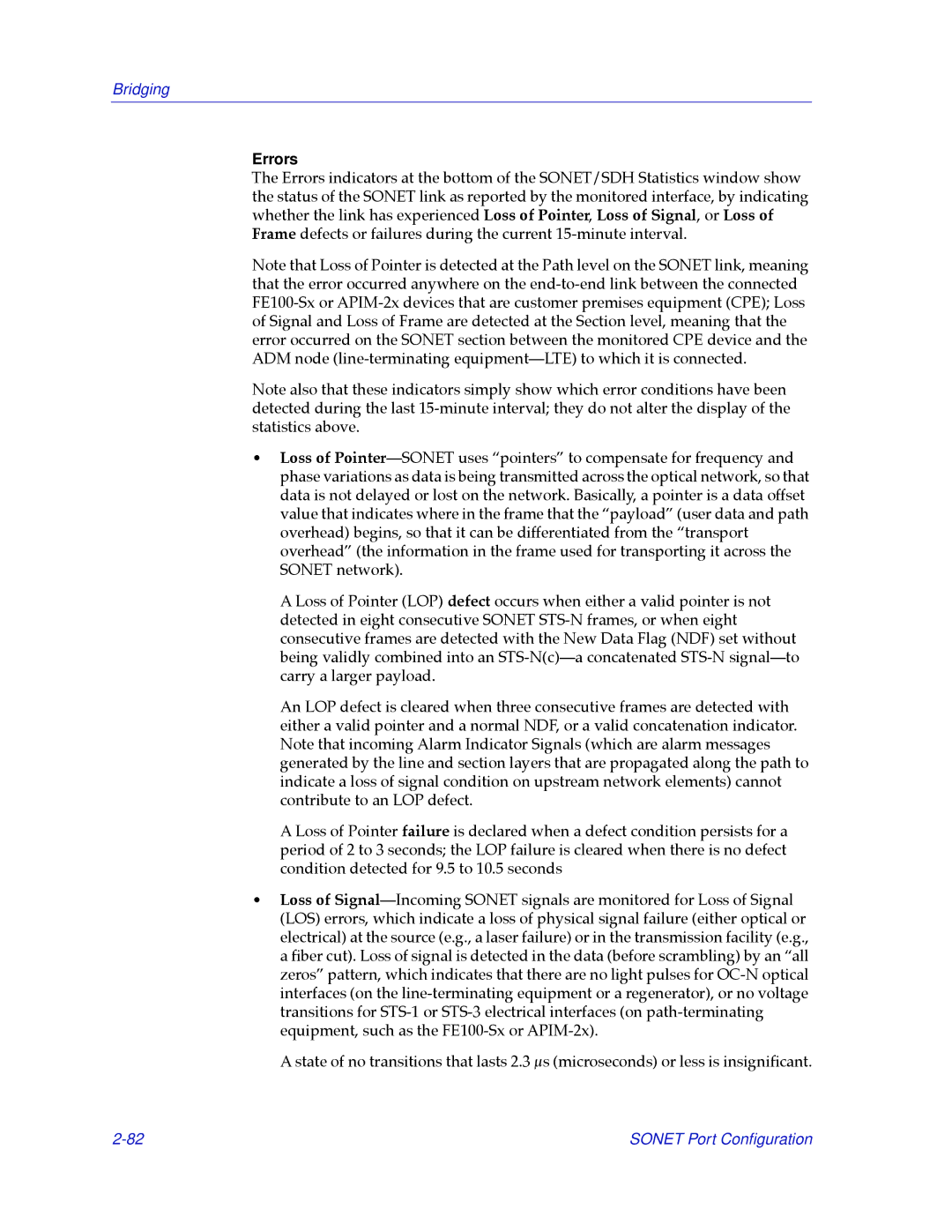Bridging
Errors
The Errors indicators at the bottom of the SONET/SDH Statistics window show the status of the SONET link as reported by the monitored interface, by indicating whether the link has experienced Loss of Pointer, Loss of Signal, or Loss of Frame defects or failures during the current
Note that Loss of Pointer is detected at the Path level on the SONET link, meaning that the error occurred anywhere on the
Note also that these indicators simply show which error conditions have been detected during the last
¥Loss of PointerÑSONET uses ÒpointersÓ to compensate for frequency and phase variations as data is being transmitted across the optical network, so that data is not delayed or lost on the network. Basically, a pointer is a data offset value that indicates where in the frame that the ÒpayloadÓ (user data and path overhead) begins, so that it can be differentiated from the Òtransport overheadÓ (the information in the frame used for transporting it across the SONET network).
A Loss of Pointer (LOP) defect occurs when either a valid pointer is not detected in eight consecutive SONET
An LOP defect is cleared when three consecutive frames are detected with either a valid pointer and a normal NDF, or a valid concatenation indicator. Note that incoming Alarm Indicator Signals (which are alarm messages generated by the line and section layers that are propagated along the path to indicate a loss of signal condition on upstream network elements) cannot contribute to an LOP defect.
A Loss of Pointer failure is declared when a defect condition persists for a period of 2 to 3 seconds; the LOP failure is cleared when there is no defect condition detected for 9.5 to 10.5 seconds
¥Loss of SignalÑIncoming SONET signals are monitored for Loss of Signal (LOS) errors, which indicate a loss of physical signal failure (either optical or electrical) at the source (e.g., a laser failure) or in the transmission facility (e.g., a Þber cut). Loss of signal is detected in the data (before scrambling) by an Òall zerosÓ pattern, which indicates that there are no light pulses for
A state of no transitions that lasts 2.3 µs (microseconds) or less is insigniÞcant.
SONET Port Configuration |
